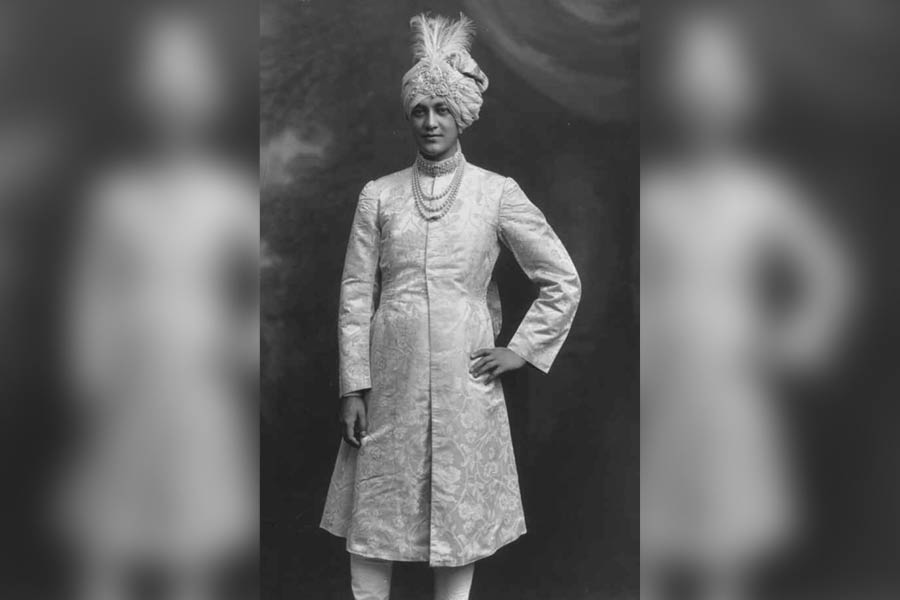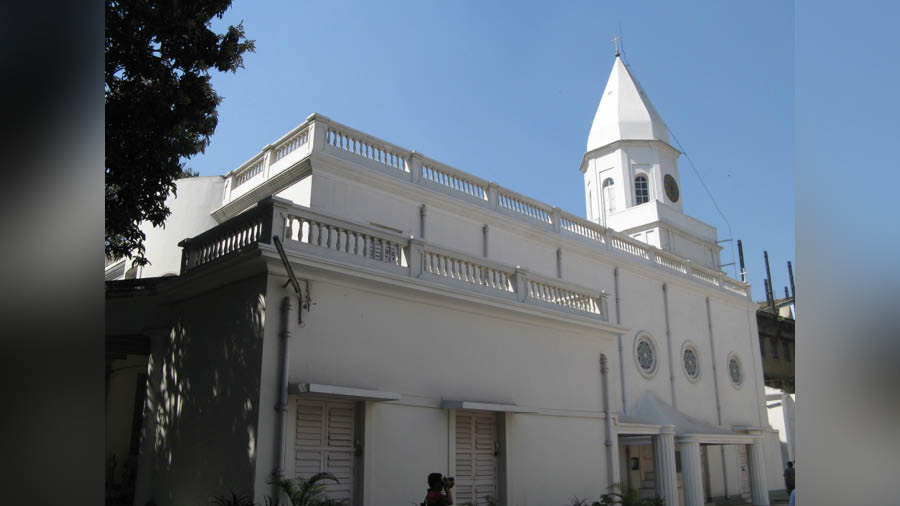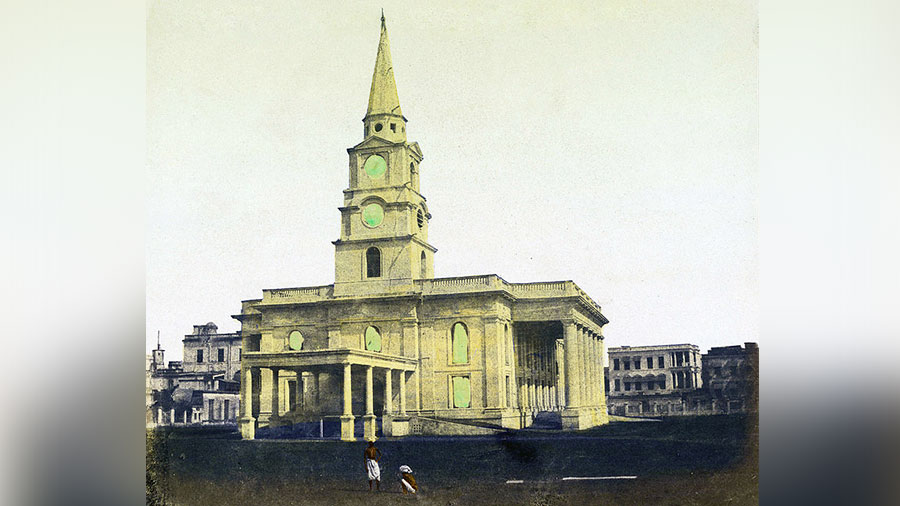The T20 World Cup has just got rolling in the Caribbean and the US. Indian cricket fans are praying fervently for the national team to break its long-running deadlock at ICC events. Although Kolkata has historically been associated more with football than cricket, yet the game has never lacked popularity in the city and cricketers from all over the world have paid rich tributes to the magnificent Eden Gardens stadium and the passionate cricket fans of India.
Cricket came to Calcutta with the British – just as in other parts of India. However, unlike Bombay, Poona etc. where the spread of the game owed majorly to the Parsi community – earliest cricket ‘converts’ among Indians – in Calcutta, it was somewhat a different story. Till the late 18th century, cricket remained largely the preserve of the white man, with the Calcutta Cricket Club and Ballygunge Cricket Club – forefathers of present day CCFC – the key pillars of the game in the city.

The ground of the Calcutta Cricket Club, January 1861. Percy Carpenter
Apart from the Parsis, the other set of Indians who fell in love with cricket were the Indian royals. For them, it was a way to ingratiate themselves with the British overlords. Royal families like Patiala, Pataudi, Jamnagar and Vizianagaram were to play major roles in the early years of the BCCI and the Indian national cricket team. Calcutta/Bengal was not an exception in terms of royal families taking to cricket. But one of the royals of the region who was pivotal in the spread of the game among common Indians was certainly a most exceptional character.
In the Rajshahi division in the northern part of present-day Bangladesh lies the district of Natore. During the British period, Natore was ruled by the Rajshahi royal family. In 1877, Jagadindra Nath Roy Bahadur became the Maharaja of Natore. He was the adopted son of the previous ruler, Govind Chandra Nath Roy, who had died without a heir. Jagadindra Nath was an avid lover of cricket. Having moved to Calcutta in later years, he had become a member of the Calcutta Cricket Club. However, this king was rather unusual in his beliefs.
Despite hailing from a royal family, he was a staunchly patriotic man who was deeply inspired by the nationalistic teachings of ‘Rastraguru’ Surendranath Banerjee. And for him, the hegemony of the white man in the game of cricket was something that had to be overcome. With the doors of the English clubs closed for Indians unless they came from royal stock, Jagadindra Nath decided that the only way forward was to establish his own cricket team. Natore XI was thus formed in 1890. The team played its matches in both Natore and Calcutta. At Old Ballygunge, Jagadindra Nath built a magnificent cricket ground to host the matches for his club.
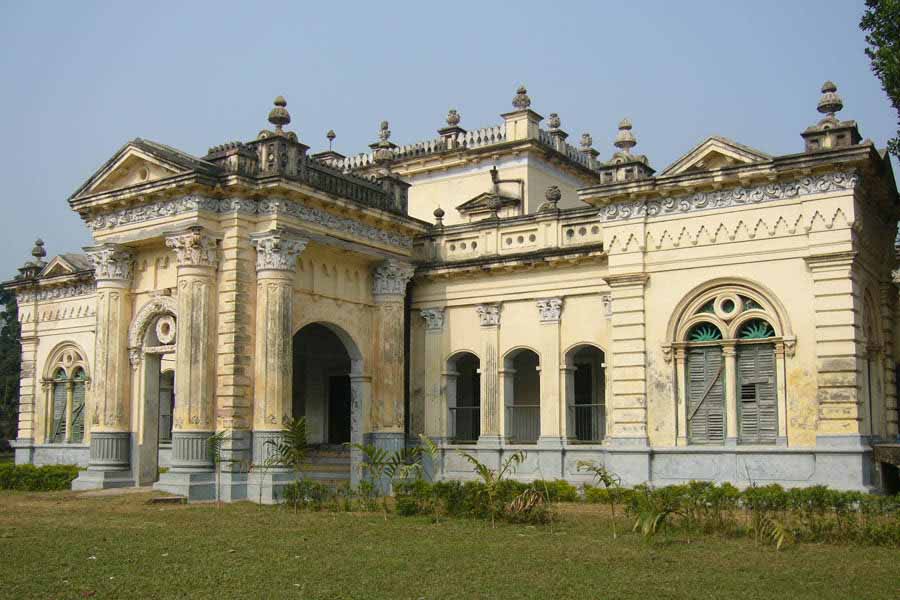
Natore Rajbari (Palace)
In a move reminiscent of Real Madrid’s Galacticos, Jagadindra Nath recruited some of the finest talents across the subcontinent to turn out for his team. The names included the famed Palwankar brothers from western India, the great wicketkeeper K Sesachari from Madras, the renowned fast bowler HL Sempre from Karachi and Kekashru Mistry – the famed Parsi batsman from Poona, among others. A well-known local player of the time was Moni Das. However, he belonged to the lower caste and was thus considered persona non grata by many. But Jagadindra Nath overruled such prejudices and included Das in his Natore team.
But the ruler of Natore was not the only Bengali royal with deep affection for cricket. Up in the northern part of the state, the rulers of the kingdom of Cooch Behar would earn much fame for their patronisation of the game. It started with Maharaja Nripendra Narayan Bhup Bahadur. A thoroughly Anglicised man who received his higher education in England, Nripendra Narayan imbibed a love for cricket among other things English. Nripendra Narayan built two magnificent cricket grounds – one in the compound of his palace in Cooch Behar and the other at Woodlands Garden in Calcutta. Like Natore, he also invited reputable players to turn out for his team: the Maharaja of Cooch Behar XI. But unlike Jagadindra Nath, the door of the Cooch Behar Royal XI was not open for common Indians.
Nripendra Narayan’s patronisation of cricket, while ignoring the locals, was a big factor for Jagadindra Nath’s active push for cricket. Jagadindra Nath invoked support from Sarada Ranjan Roy* and his brothers, Muktida Ranjan, Kulada Ranjan and Promod Ranjan to help spread the game among common Indians of the state. The intense rivalry between the two royals and Jagadindra Nath’s dream of defeating Calcutta Cricket Club with an Indians only XI played a big role in spreading the popularity of the game. Both royals were also active patrons of the Bengal Gymkhana. In 1911, Bengal Gymkhana played its first match against King of Kashmir’s XI at the Woodlands Garden cricket ground.
The rivalry between the two kings however came to a sudden end. In 1911, Maharaja Nripendra Narayan passed away in England. The legacy of the Cooch Behar royal family in cricket, however, continued. His sons all played cricket and one of them, Hitendra Narayan, turned out for Somerset in county cricket. And his grandson, Jagadipendra Narayan who became king later, led the Bengal Ranji Trophy team. However, the Natore cricket team did not survive for too long. In the early years of the WWI, Jagadindra Nath lost interest in cricket. Some felt the sudden death of his great rival – Nripendra Narayan – was a major factor in him losing interest. His son, Prince Jogendra Nath, although reputed to be an accomplished cricketer, left the game early. And the Natore XI was a thing of the past by the end of WWI.
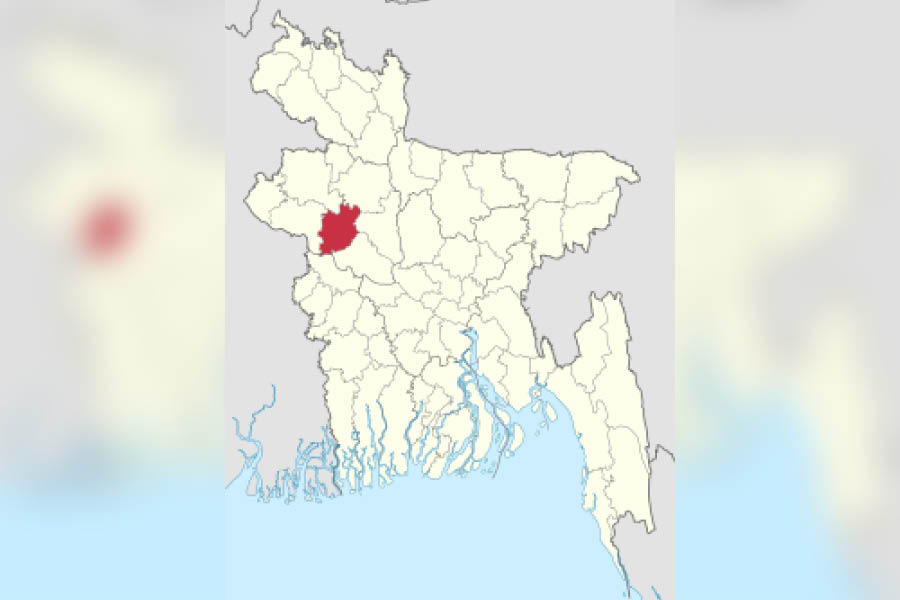
Natore district in Bangladesh
Today, very few outside cricket nerds remember the Natore cricket team and their great rivalry with the Cooch Behar team. But as you settle down to watch the Indian cricket team take on the rest of the world, it may be worthwhile remembering their pioneering efforts to propagate the game.
*Sarada Ranjan was the brother of Upendra Kishore Roy Chowdhury and was an accomplished cricketer and cricket coach who also ran a cricket gear business and translated MCC cricket manuals in local vernacular
